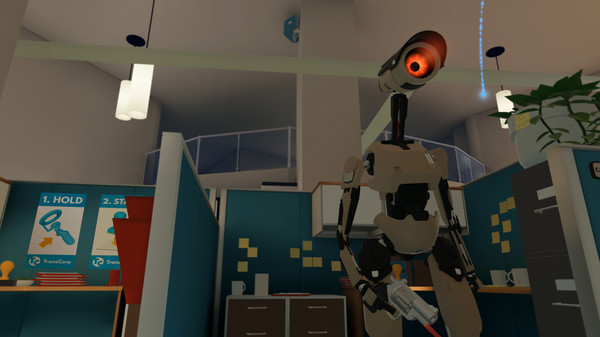Citing insider sources, the video talks about how it impacted Valve’s locomotion options, and essentially “showed Valve up” with what was possible in VR. Here’s the video:
We recently got a chance to talk to Valve programmer and designer Robin Walker and asked him how true these claims are. “The Boneworks thing is weird,” he told me. “Everyone seems to think that there’s some hidden story there. That’s very confusing to me. I don’t know where that came from. We showed our game to a lot of people in the years we were working on it. “So, you know, there were definitely those Boneworks guys, and a whole bunch of the other original, you know, Tilt Brush. We showed it to a bunch of those folks.” During that period of show and tell, one game in particular stood out, and it wasn’t Boneworks.
“The one that probably influenced us the most was our playing of Budget Cuts, years ago,” Walker explained. “Budget Cuts made us realise that teleporting wasn’t going to be as destructive to the experience as we assumed it would be. “I think the reason we all assumed it would be is for the same reason that you assume that not having arms would be really destructive when you watch someone else do it. You watch someone else do teleport, and it’s very jarring to your experience, and you assume that that’s the case for the person playing. But Budget Cuts showed us that wasn’t the case at all.” Valve found that players could quickly adjust to a lack of arms and teleportation as a form of movement, even if it looked strange to someone passively spectating. “For any mechanic like movement, there’s this early period where you’re very focused on the doing of it, the execution of it, as you learn it,” Walker said. “And then as you reach the point where it becomes automatic, almost muscle-memory, it recedes to the background of your mind, and you become much more focused on what you’re doing with it. “When you play a first-person shooter, you’re not thinking about the pressing of the WASD keys, by the time you’ve done that for a few games. You’re just thinking about where you want to be.”
While there is an option for free movement in Half-Life: Alyx, teleportation is the default, and arguably the way it was meant to be played. It’s a full-length game, after all, and zipping around instead of moving freely while your physical body stands still outside of the game helps to keep that sickness feeling away. One of the keys to keeping teleportation immersive was actually down to level design - making sure the player always has something worth stopping for. Players need “new information” as they travel, to prevent them having to do consecutive zips over vast distances. “Things like world density turned out to be very important,” Walker explained. “New information could be anything from seeing something that looks like it might be a threat, so you need to pay a little bit of attention to it, to seeing an object you might want to collect, or seeing an opportunity to search for something, seeing an area that looks like, ‘Wait a minute. I should stop and take a look at that.’ “If none of that happens, then that’s when people would notice their movement mechanic. As soon as that world got so dense that you were rarely doing more than one or two teleports in a row before you felt like you had to stop because there was stuff you had to pay attention to, then once we hit that density, our playtesters just stopped talking about teleport entirely, and just seemed to be become far more fully engrossed in the world.” You can read our review of Half-Life: Alyx here. If you’re wondering why we don’t have a full-on version of Portal in VR, we also asked Valve about that at that link.

